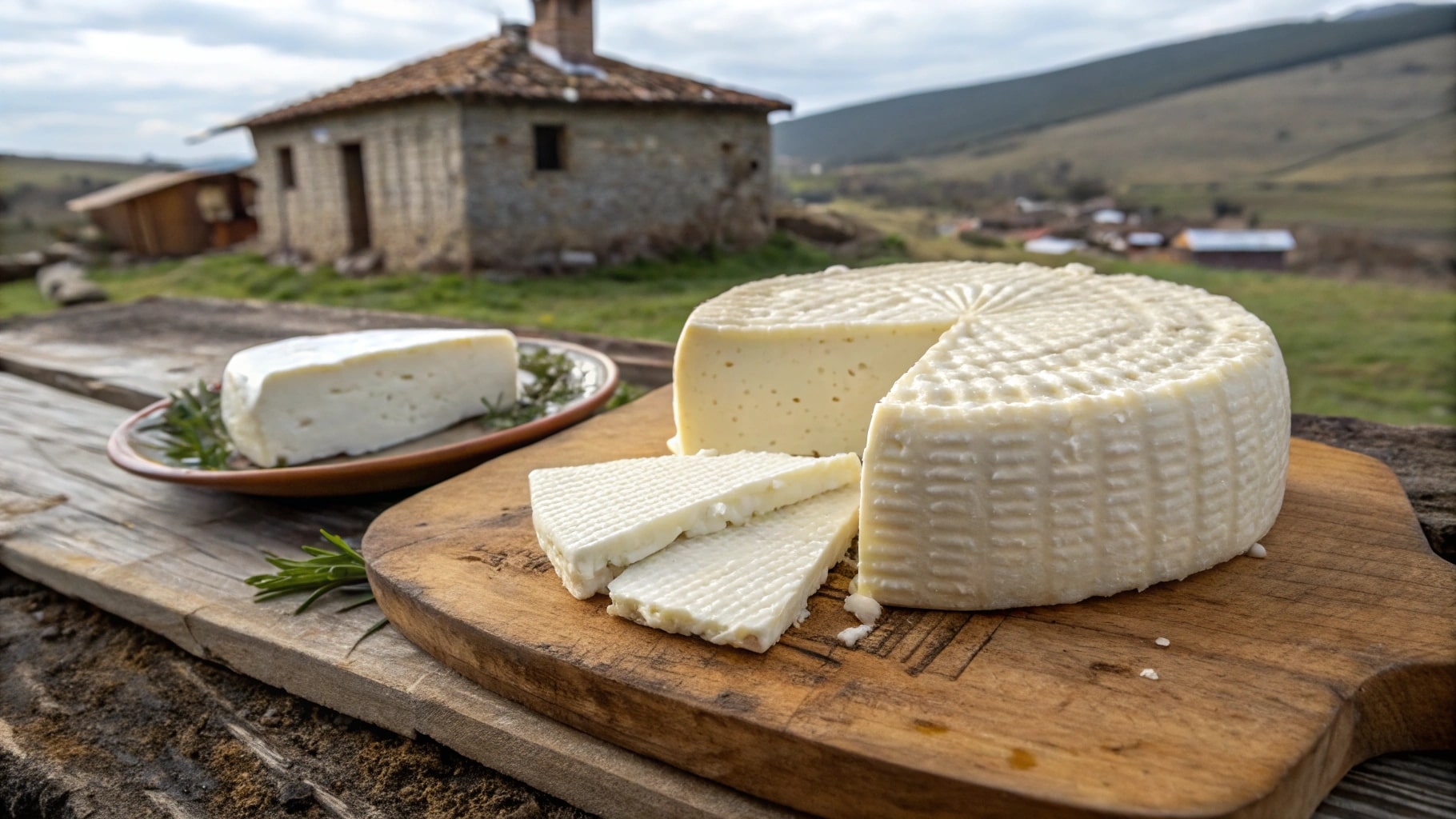Introduction to Çeiri: What It Really Is
Çeiri is often described as a unique dairy product that holds a special place in Turkish culture. It is believed to be similar to cheese, but more rustic in preparation and deeply connected to traditional lifestyles. Unlike factory-made cheese, Çeiri is prepared with local methods, usually in small batches, making it different in taste and texture. This difference makes it stand out as both a food item and a cultural heritage symbol.
In modern times, people are searching for natural and authentic foods. Çeiri has gained attention as a traditional option that is more organic and closer to nature. Its simplicity, freshness, and cultural importance make it not just a food but also a reminder of past traditions. As interest in cultural foods grows, Çeiri is gaining recognition as an example of how local food practices can survive even in today’s globalized world.
The Origin and Meaning of the Word Çeiri
The word “Çeiri” is still somewhat mysterious, as its exact origin is not widely documented. Some researchers connect it to old Turkish dialects, while others believe it refers specifically to a style of dairy product from rural regions. Unlike words like “peynir” (cheese) that are common in Turkish, “Çeiri” is more rare and often appears in cultural or heritage-based discussions.
In its essence, Çeiri represents tradition, simplicity, and community living. The meaning goes beyond just food, as it is linked with hospitality and sharing in Turkish villages. Understanding Çeiri also means understanding the cultural background of Turkish households, where dairy products have always played a central role. Whether used in meals, festivals, or family gatherings, Çeiri is remembered as something more than just nutrition — it is a part of life, language, and local customs.
Traditional Methods of Making Çeiri
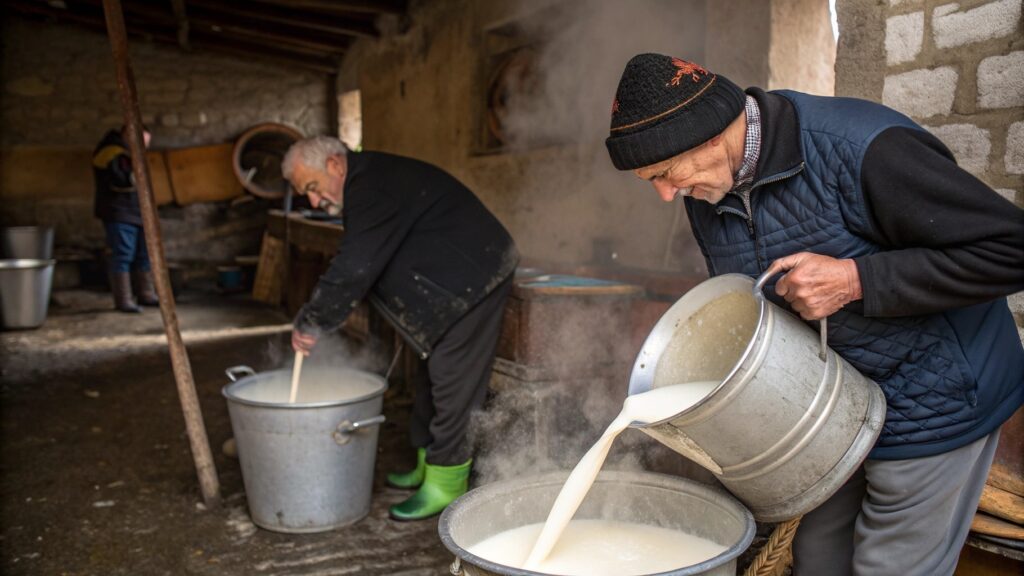
The process of making Çeiri is quite traditional and usually passed down through generations. Typically, fresh cow, goat, or sheep milk is collected early in the morning. The milk is then heated and allowed to curdle using natural methods such as fermentation or by adding natural enzymes. This creates a soft, semi-solid mass which is pressed and shaped by hand. The methods vary slightly depending on the region, but they all focus on maintaining natural flavors.
In rural communities, Çeiri is often prepared at home or in small family workshops. The tools are simple, often made of wood or clay, which adds a rustic touch to the final product. Unlike industrial cheese-making, where machines and chemicals are heavily used, Çeiri remains close to its roots. This makes it healthier and more authentic. For many Turkish families, making Çeiri is not just about producing food but also preserving a family tradition that connects them to their ancestors.
Cultural Importance of Çeiri in Turkish Heritage
Çeiri is more than just a dairy product — it is a cultural symbol. In Turkish villages, food has always been a way to bring families and communities together. Sharing Çeiri at the table represents warmth, hospitality, and generosity. For many older generations, Çeiri reminds them of their childhood, when life was simpler, and food was made at home instead of bought in stores.
The cultural role of Çeiri can also be seen in festivals and local celebrations. In some regions, Çeiri is prepared in large amounts during harvest festivals or family gatherings, symbolizing abundance and blessings. Such traditions keep the spirit of Çeiri alive. Even though globalization has changed eating habits, the love for Çeiri remains strong in rural areas. By celebrating Çeiri, Turkish communities keep their heritage alive and pass it to younger generations, ensuring that it remains part of their identity.
Health and Nutritional Benefits of Çeiri
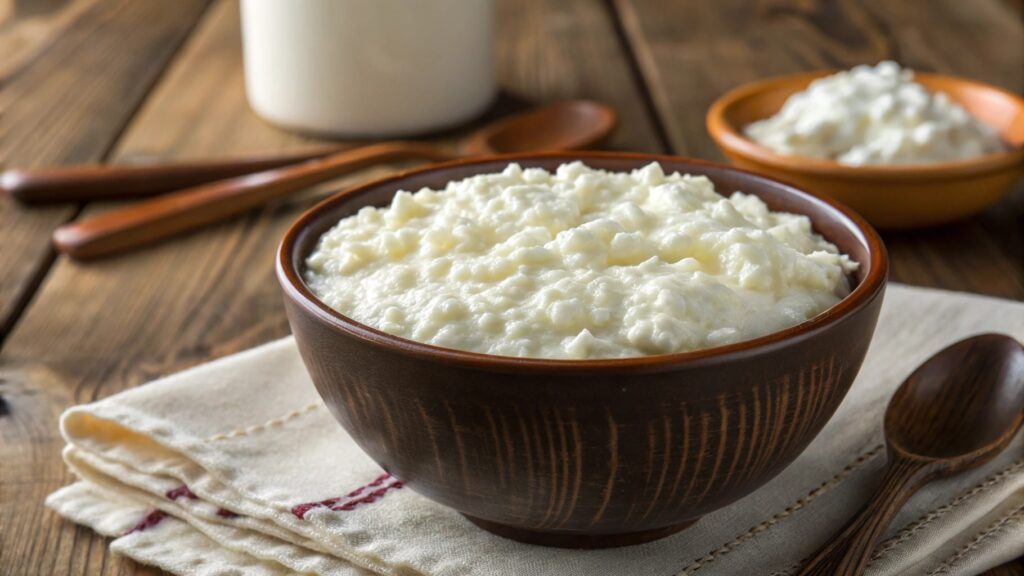
Çeiri is not only delicious but also nutritious. Like most traditional dairy products, it is rich in protein, which is essential for muscle growth and energy. It also contains calcium, which strengthens bones and teeth, making it especially valuable for children and older adults. The fermentation process used in making Çeiri introduces probiotics, which support healthy digestion and improve gut health.
Another health benefit of Çeiri is that it is usually free from chemical additives and preservatives. Since it is often homemade or locally produced, it is more natural compared to industrial dairy products. This makes it a healthier choice for people who want to eat closer to nature. However, those who are lactose intolerant may need to be careful while consuming it. Overall, Çeiri is a wonderful example of how traditional foods can provide both taste and health benefits in one package.
Popular Dishes and Recipes Using Çeiri
Çeiri is versatile and can be used in many dishes. In traditional Turkish kitchens, it is often eaten fresh with bread, olives, and tea for breakfast. It can also be added to pastries, such as börek, giving them a rich and unique flavor. In rural areas, Çeiri is sometimes melted and served with warm bread, creating a comforting meal that families enjoy together.
Beyond breakfast, Çeiri can also be used in soups, salads, and meat dishes. Its mild yet distinctive taste makes it suitable for combining with herbs and spices. Some families have their own secret recipes where Çeiri is mixed with honey or fruits for a sweet twist. This shows how flexible Çeiri is, fitting into both savory and sweet dishes. By exploring such recipes, people can discover new ways to enjoy this traditional dairy treasure.
Difference Between Çeiri and Other Dairy Products
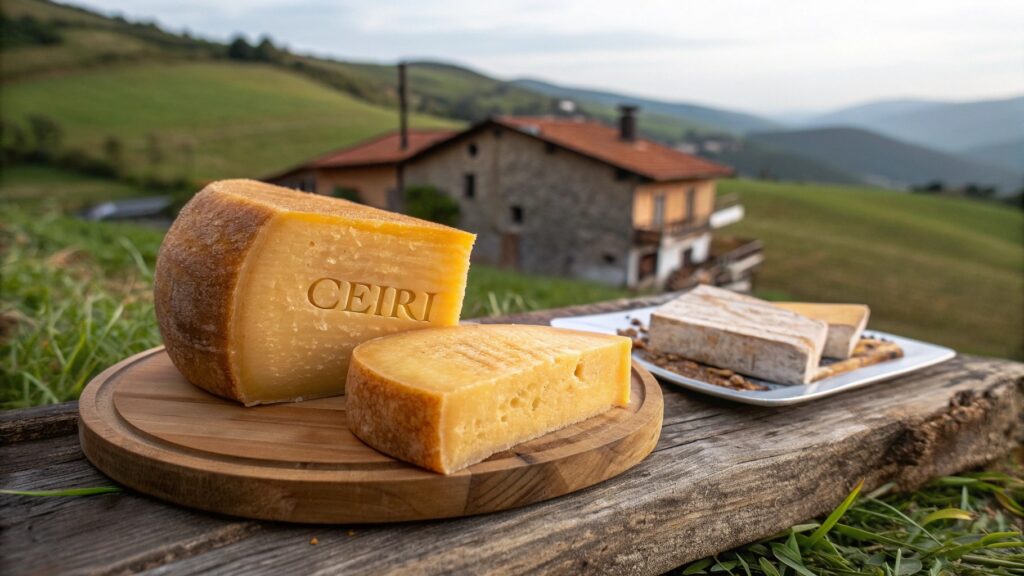
At first glance, Çeiri may look like regular cheese, but it has key differences. Unlike industrial cheese, which is standardized and mass-produced, Çeiri is made in small batches with natural methods. This gives it a more rustic texture and a stronger connection to its place of origin. Its flavor is also less processed, often carrying hints of the region’s natural environment.
Another difference lies in its cultural meaning. Cheese in general is a food product, but Çeiri is treated as a heritage item in Turkey. It carries family traditions, social values, and local identity in a way that normal cheese does not. Because of this, Çeiri has both nutritional and emotional importance. It represents a bridge between food and culture, making it more than just another dairy product on the table.
Modern Production and Market Availability of Çeiri
With growing interest in traditional foods, Çeiri is slowly entering modern markets. Small-scale producers in Turkey are now packaging it in jars or vacuum-sealed bags to sell in local shops and farmers’ markets. Some even export it to specialty stores abroad, especially in areas where Turkish communities live. However, it is still rare compared to other dairy products like feta or mozzarella.
Modern production tries to balance tradition with safety standards. While the techniques are updated for hygiene and shelf life, the core methods remain close to the original. This allows more people to enjoy Çeiri without losing its authentic taste. As the demand for natural and cultural foods increases worldwide, Çeiri has the potential to grow in popularity. Yet, it remains a niche product that thrives mostly in local communities rather than in global supermarkets.
Challenges in Preserving Traditional Çeiri Making
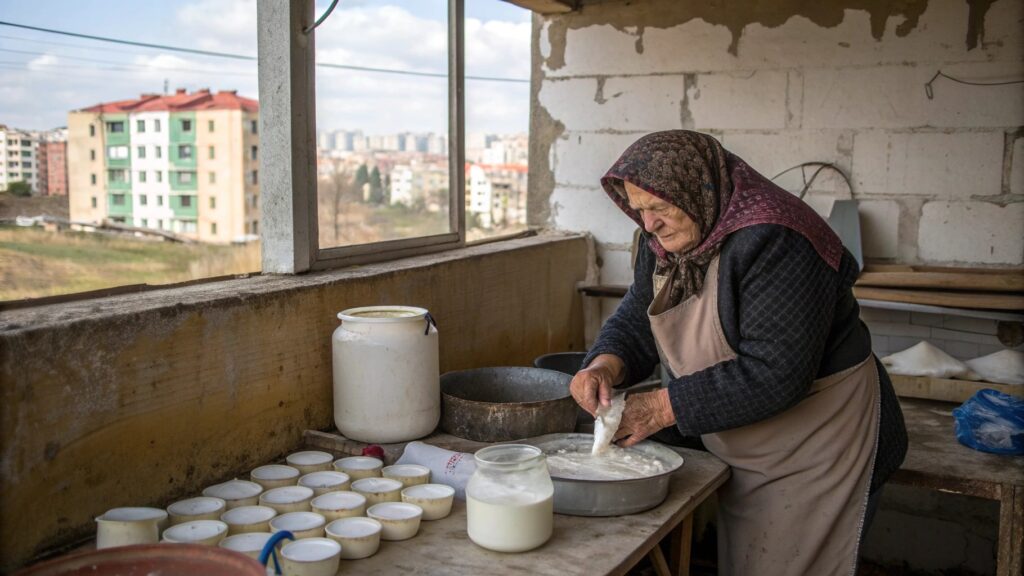
Preserving traditional Çeiri is not without challenges. One major issue is modernization, which has reduced the number of families making it at home. Younger generations are more interested in ready-made foods, leaving old recipes at risk of being forgotten. Urbanization has also shifted lifestyles, reducing the practice of small-scale dairy farming.
Another challenge is competition from industrial dairy products. Since mass-produced cheese is cheaper and more widely available, traditional Çeiri often struggles to find space in the market. There are also concerns about losing authenticity if Çeiri becomes too commercialized. To protect it, cultural organizations and local producers need to document the traditional methods and promote them as part of Turkish heritage. Without these efforts, Çeiri could slowly fade away, losing its place in both kitchens and cultural memory.
Çeiri in Global Food Culture and Export Potential
In recent years, global food culture has become more open to traditional and exotic items. Çeiri fits into this trend as a unique dairy product with a story. While it is not yet as popular as other Turkish foods like baklava or kebab, it has the potential to attract attention in niche markets. Food lovers around the world are looking for authentic experiences, and Çeiri can offer exactly that.
Export potential depends on awareness and marketing. By highlighting its health benefits, cultural roots, and unique taste, producers can present Çeiri as a premium traditional product. If promoted properly, it can find a place in specialty cheese shops, international food festivals, and even fine-dining restaurants. However, success will require careful planning to maintain authenticity while meeting international standards.
Tips for Storing and Serving Çeiri at Home
Storing Çeiri properly is important to preserve its taste and freshness. Ideally, it should be kept in a cool environment, such as a refrigerator, wrapped in cheese paper or stored in a sealed container. If it comes in brine, the liquid should be kept, as it helps maintain freshness. Unlike hard cheeses, Çeiri is softer and can spoil faster, so it should be consumed within a few days to weeks, depending on how it was made.
Serving Çeiri can be simple yet elegant. It goes well with fresh bread, olives, tomatoes, and herbs, making it perfect for a Turkish-style breakfast. It can also be paired with honey or dried fruits for a sweet treat. For a modern touch, it can be added to salads, pasta, or grilled dishes. By experimenting with different serving styles, Çeiri can be enjoyed in both traditional and contemporary meals.
Conclusion: Why Çeiri Still Matters Today
Çeiri is more than just a dairy product — it is a living tradition. It connects people to their cultural roots, offers unique flavors, and provides important health benefits. In a world dominated by processed foods, Çeiri stands out as a symbol of authenticity and heritage. Its value lies not only in taste but also in the memories and customs it carries forward. By supporting traditional makers and sharing its story, we can help Çeiri survive in modern times. Whether enjoyed at a family breakfast, presented at cultural events, or introduced to global markets, Çeiri has the power to remind us of the importance of preserving food heritage. As long as people continue to value authenticity and tradition, Çeiri will remain a meaningful part of Turkish culture and beyond.
FAQs about Çeiri
What is Çeiri?
Çeiri is believed to be a traditional Turkish dairy product, often compared to cheese, with cultural and culinary significance.
Where does Çeiri come from?
It is said to have roots in Turkish heritage, though exact origins are debated due to limited authentic sources.
How is Çeiri made?
Traditionally, it is prepared with fresh milk using local fermentation or curdling methods, though variations exist.
Is Çeiri healthy to eat?
Yes, Çeiri can be rich in protein, calcium, and probiotics, but those with lactose intolerance should consume carefully.
Can I find Çeiri outside Turkey?
In some cases, modern packaged versions may be found in specialty or international stores, but it’s still rare globally.
How is Çeiri different from normal cheese?
Çeiri is usually more rustic and tied to cultural traditions, while regular cheese is mass-produced and standardized.
Related Post:

